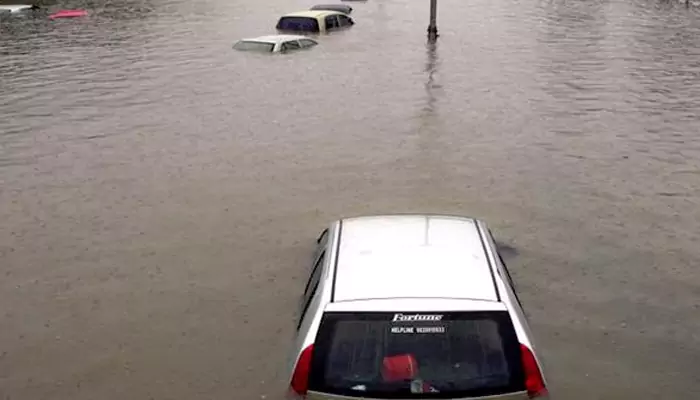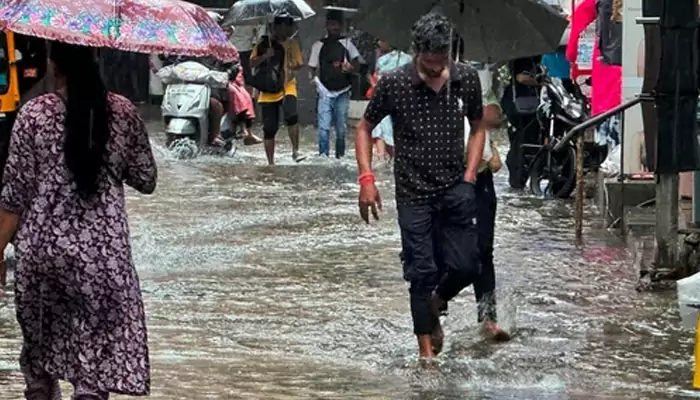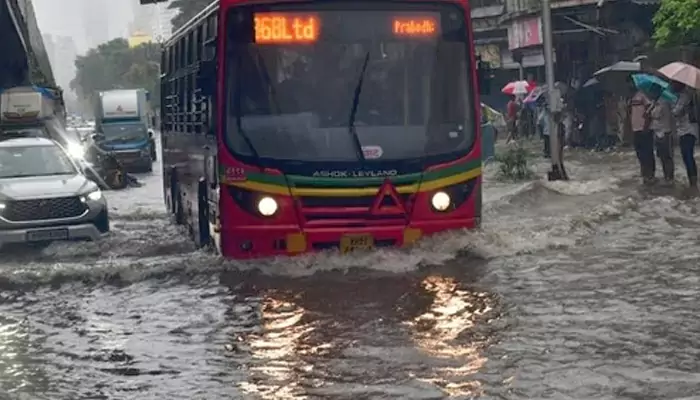Mumbai Flooded Again: Exploring Key Factors Behind The Disaster Every Monsoon
- Admin
- 1 year ago
- 3 minutes read

The IMD (India Meteorological Department) has issued warnings in Mumbai along with its adjoining areas such as Pune, Thane, and Nagpur.
Bollywood doesn't show you this side of the Mumbai rains. Thanks to the incessant heavy rainfalls for the past few days, many parts of the city have been severely waterlogged. Roads are flooded with water, causing significant traffic jams and affecting daily life. There are power outages in some areas, local trains are reportedly running late, and flights are getting either delayed or canceled. The visuals are quite scary, and what's even worse is the situation is likely to continue for a few more days.
"In view of the continuous and heavy rains in Mumbai, citizens are requested to avoid going to the coastal areas and move out of their house only if necessary." - Mumbai Police

For most Mumbaikars, monsoon has never been about romanticism but about struggles. And here comes an important question; why have these floods become a common scenario literally every year? What are the main factors? In this article, let's learn that in detail.
The Vulnerable Topography
Mumbai is situated on the coast, and not to mention it receives intense rainfall (due to its geographic location) every monsoon. Hence, the city is naturally prone to floods. Also, most of Mumbai is built on reclaimed land, resulting in several low-lying and saucer-shaped areas. So, during heavy rains, water flows down naturally to areas such as Sion, Andheri, and Milan, causing floods.

The Outdated Stormwater Drainage System
The stormwater drainage system in Mumbai is outdated and fails to tackle heavy rains like this. Consisting of 2000 km of surface drains and 400 km of underground drains, the network is capable of handling around 25 mm of rainfall every hour during low tide. And the city typically receives over 50 mm (sometimes exceeds 100 mm) of rainfall per hour during monsoon.
 of rainfall per hour during monsoon..webp)
What's even worse is these drains are not capable of clearing out the water during high tide and heavy rainfall. In such cases, the scenario becomes out of control.
The Rapid Construction
Now it feels surreal that Mumbai used to be largely green just a hundred years ago. At those times, most of the waters during heavy rains percolate through the ground, and the rest would be drained. However, due to rapid construction across the city, these natural drainage systems are no longer of any use. As a result, floods have become increasingly common here over the past few years.

It's also worth noting that the roadside drains in Mumbai get clogged with garbage from construction sites. And on the other hand, water bodies like lakes, rivers, and others lose their ability to manage floods - all thanks to constant urbanization.
The Loss of Mangrove Forests
Since the 1990s, Mumbai has lost almost all of its mangrove forest cover. And this, without an iota of doubt, is one of the main factors behind such floods in the city.

Mangroves help rainwater flow out to the sea easily. Also, they are quite capable of absorbing huge amounts of water during heavy rains. Now, with fewer forests, there's a significant reduction in water absorption. Also, the rapid loss of mangroves has weakened the coastal areas, making the city immensely vulnerable to floods.
However, if you are currently in Mumbai, please note that there's absolutely no need to panic. Don’t go out unless it's an emergency, and take all the necessary precautions. Stay safe!












.webp)